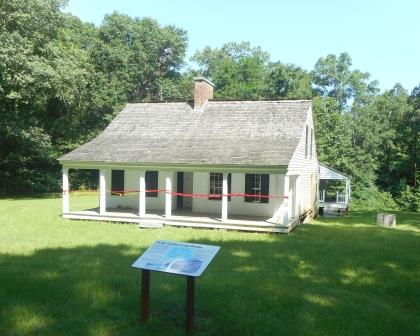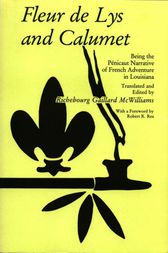As we recently discussed in our review of Michael Ballard’s excellent study of the Vicksburg Campaign, the capture of the “Confederate Gibraltar” was indisputably one of the key turning points of the Civil War. In addition to being one of the war’s most important developments, the campaign happens to be one of its most complex, as well. Involving nearly 100,000 troops and dozens of warships maneuvering over a huge swath of two states, the campaign featured extended marches, numerous skirmishes and battles, and unavoidably affected several communities. Those interested in exploring the grounds on which this milestone campaign unfolded should know that there is much more to see today than just the Vicksburg National Military Park; there are numerous sites and structures associated with the campaign that are interpreted and accessible to the serious Civil War tourist.
Below is a summary of some of the highlights of any tour of the campaign, arranged in rough chronological order. For an in-depth tour of the campaign, we recommend the Vicksburg Campaign Driving Tour Guide, compiled by the Friends of the Vicksburg Campaign and Historic Trail (2008).

The Mississippi River at Natchez
The Mighty Mississippi bisected the Confederacy into two halves; as long as Vicksburg remained in Confederate hands the South remained, in theory, a unified nation and controlled shipping on North America’s greatest waterway.

Grant’s Canal
Gen. Ulysses S. Grant made several approaches to Vicksburg before finally settling on the route that ultimately brought success. An intriguing remnant of one of the most labor-intensive (and ultimately futile) attempts are the remains of what is known as “Grant’s Canal” near Tallulah, Louisiana. There, in a sharp bend in the Mississippi River, Grant had laborers attempt to construct a canal that would essentially reroute the river and leave Vicksburg high and dry—and hence irrelevant.

Grant’s March in Louisiana
Grant’s bold move towards Vicksburg involved crossing the Mississippi near Port Gibson and marching inland. His route through Louisiana as he moved towards the crossing is marked (though inadequately) and there are several locations where historic markers interpret actions in the campaign.

Winter Quarters
One of the few surviving structures in Louisiana associated directly with the campaign is Winter Quarters, a plantation home that served as a campground for Union troops during their march. The home was operated by the state of Louisiana for several years. Although closed at present, the grounds are still accessible.

Shaifer House
The historic Shaifer House was the scene of some of the first shots of the Battle of Port Gibson, where hastily assembled Confederate forces attempted to slow Grant’s march. The home’s residents barely escaped the approaching Union army as shots rang out in the predawn hours of May 1, 1863. The site is owned by the Mississippi Department of Archives and History, and features historic markers and a kiosk with information.

Road in Port Gibson
The ground over which the Battle of Port Gibson raged is one of the most unique in the Civil War. The fight in large part took place along winding roads cut through high bluffs in a thick wilderness. It was a confusing, disjointed affair at the time, and following its course can be challenging even today on the Claiborne County backroads. If you venture into the region, be careful on the many dirt roads and bring a map.

Confederate powder magazine at Grand Gulf Military Park
Grand Gulf Military Park, the site of a major Confederate gun installation along one of the highest bluffs along the river as well as the location for two assaults by Union forces, features a museum and a short driving tour. Along the route are a variety of earthworks, an observation tower, and the remains of a powder magazine.

Grant’s March in Mississippi
Grant’s march into central Mississippi, resulting in the battles of Raymond, Jackson, Champion Hill, and Big Black River Bridge, is well marked. The route follows a long section of the old Port Gibson Road slicing from southwest Mississippi up towards Jackson. Numerous historic markers and well-placed signage allow travelers to follow the route.

Battle of Raymond
One of the largest battles in the entire campaign was the Battle of Raymond, in which a small Confederate force attempted to attack an entire Federal division. The site where the pitched battle took place has recently been developed into a true battlefield park with excellent interpretation and a walking trail.

Battlefield Park
There were military engagements in and around the Mississippi capital during the campaign. Markers stand in several spots in Jackson commemorating these events, and they are chronicled in exhibits at the Old Capitol Museum. This image shows Battlefield Park in west Jackson, which contains the remnants of some of the earthworks dug during the siege of Jackson that occurred after the surrender of Vicksburg.

Coker House
Perhaps the most pivotal event of the campaign prior to the siege at the town of Vicksburg was the Battle of Champion Hill, the largest battle during the campaign. Fought across a heavily wooded landscape and centered around a small rise on land belonging the Champion family, the battle was a vicious, close-quarters contest. The Coker House, which stood at the time of the battle and served as a hospital for the wounded, is the primary point for interpretation of the battle. On its grounds are several interpretive panels. The house is owned by the Mississippi Department of Archives and History. It is not open for tours, but its grounds are accessible.

Tilghman Monument
A short distance from the Coker House stands the Tilghman Monument, marking the exact spot on which Confederate leader Lloyd Tilghman was killed by artillery fire.

Big Black River Bridge
The final effort at slowing the Union army before it made its way into Vicksburg was made by the Confederate army at the railroad bridge crossing the Big Black River. Although the terrain provided excellent cover, Federals routed the demoralized defenders, who beat a hasty retreat into Vicksburg in the aftermath. Some of the pilings from the Civil War-era bridge can still be seen in the stream.

Vicksburg National Military Park
The Vicksburg National Military Park is a superbly-interpreted and heavily monumented park which may be toured via a driving route around the core of the Confederate line which protected the Hill City in 1863. As there are numerous stops along the route where visitors may want to walk and view interpretive signage, you should allow a minimum of 3 hours to see the park. To see everything could literally take days.

USS Cairo
One of the best Civil War museums anywhere is contained within the Vicksburg NMP; the USS Cairo Museum. Featuring the remains of a Union warship sunk by a mine, the museum displays the incredibly intact cargo in its entirety and allows visitors to explore the most intact Civil War naval vessel currently on display.

Surrender site
The exact spot where Confederate Gen. John S. Pemberton met with Gen. Ulysses S. Grant to surrender his garrison is marked with a cannon barrel.
JMB/CPW



